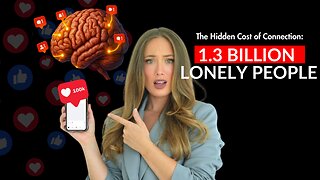Premium Only Content

Requirements vs Design in Software Development
LEARN MORE: https://www.whatisscrum.org/user-requirements-course/
Welcome to this video where we will be discussing a fundamental concept in software development: the difference between requirements and design. If you're new to creating software, you might be wondering what these terms mean, whether they are the same, and which one comes first.
Frequently Asked Questions: Requirements vs. Design in Software Development
Q1: What are software requirements, and what is their primary focus?
Software requirements describe what a software product must do. Their primary focus is on understanding and documenting the needs of the clients and users to ensure the product's success. This involves clearly defining the problem the software aims to solve, the overall vision for the product, and the specific functionalities it must possess. Solid requirements act as the foundation for a successful software project, establishing a clear understanding of what the system needs to achieve from a user and business perspective.
Q2: What is software design, and what is its main purpose?
Software design describes how a software product will meet the requirements. Its main purpose is to translate the documented requirements into a technical blueprint for development. This involves detailing the implementation aspects of the system, including user interface sketches and prototypes, as well as the underlying technical specifications, system logic, workflows, and data structures. The design ensures that the system's functionalities align with both the business needs and the user expectations as defined in the requirements.
Q3: What is the crucial difference between requirements and design in software development?
The crucial difference lies in their focus: requirements define the what – what the system needs to do, without specifying how it will be done. Design, on the other hand, addresses the how – how the system will achieve the goals outlined in the requirements. Requirements are concerned with the problem and the desired outcome, while design focuses on the solution and the technical implementation.
Q4: Why is it important to have well-defined requirements before moving on to design?
Well-defined requirements are critical because they provide clarity, avoid ambiguity, and ensure that all user needs are considered from the outset. They set a solid foundation for the design phase, allowing designers and developers to understand exactly what needs to be built. Without clear requirements, there's a risk of building the wrong system or misinterpreting user needs, leading to rework, delays, and ultimately, a less successful product.
Q5: How do requirements and design sometimes overlap, particularly in agile methodologies like Scrum?
In agile methodologies like Scrum, requirements and design can often overlap because development is iterative and involves continuous refinement. It's common for developers to consider potential design elements while they are in the process of formulating and understanding the requirements.
Q6: What problems can arise when clients or stakeholders focus on design characteristics instead of their true needs during the requirements gathering phase?
Problems arise when clients focus on specific design characteristics, such as dictating a particular technology (e.g., "the application must be in Java"), rather than focusing on the underlying problem they need to solve. This premature focus on design can impose unnecessary constraints, limit the flexibility of the development team to choose the most appropriate solutions, and potentially hinder the effectiveness and efficiency of the final product.
Q7: What are some key questions to consider to avoid blurring the lines between requirements and design?
To avoid blurring the lines between requirements and design, consider the following questions: Is the proposed solution just one of many possible options? Is the current discussion primarily addressing the core problem or a specific implementation detail? Is the client more focused on a particular solution rather than clearly identifying their underlying needs? Is the suggestion attracting developer interest based on technical preference rather than directly solving a defined user or business need?
Q8: Can you provide a simple example illustrating the difference between a requirement and a design element?
Yes, a simple example of a requirement is: "The system must allow users to reset their password." This statement clearly defines what the system needs to do – provide a password reset functionality for users. A corresponding design element would be: "Implement a 'Forgot Password' feature on the login page which, upon user request, sends a password reset link to the user's registered email address."
LEARN MORE: https://www.whatisscrum.org/user-requirements-course/
#requirements #design #software
-
 35:27
35:27
megimu32
11 hours agoMEGI + PEPPY LIVE FROM DREAMHACK!
163K12 -
 1:03:23
1:03:23
Tactical Advisor
15 hours agoNew Gun Unboxing | Vault Room Live Stream 044
245K36 -
 19:12
19:12
Robbi On The Record
16 hours ago $21.00 earnedThe Loneliness Epidemic: AN INVESTIGATION
73.9K99 -
 14:45
14:45
Mrgunsngear
1 day ago $136.48 earnedFletcher Rifle Works Texas Flood 30 Caliber 3D Printed Titanium Suppressor Test & Review
132K30 -
 17:17
17:17
Lady Decade
1 day ago $10.67 earnedMortal Kombat Legacy Kollection is Causing Outrage
87.3K18 -
 35:51
35:51
Athlete & Artist Show
1 day ago $14.16 earnedIs Ryan Smith The Best Owner In The NHL?
97.3K15 -
 22:56
22:56
American Thought Leaders
2 days agoCharles Murray: I Thought Religion Was Irrelevant to Me. I Was Wrong.
79.4K40 -
 36:22
36:22
Brad Owen Poker
17 hours agoGIGANTIC $17,000+ Pot In BOBBY’S ROOM! TRAPPING Top Pro w/FULL HOUSE!! Big Win! Poker Vlog Ep 326
81.4K9 -
 3:53
3:53
GreenMan Studio
1 day agoRUMBLE RUNDOWN: DREAM HACK SPECIAL W/Greenman Reports
66.4K13 -
 1:28
1:28
Damon Imani
2 days agoThey Laughed at Trump’s Cognitive Test — Damon Made Them REGRET It!
63.2K42